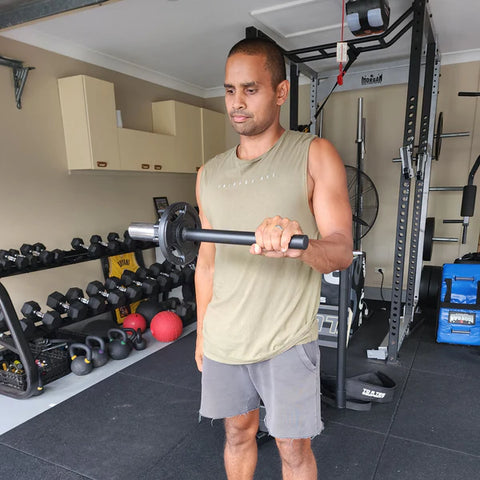
Innovative Uses for the Wrist Bar: Enhance Your Wrist Strength and Flexibility
Explore six innovative exercises using the Wrist Bar to enhance your wrist strength, flexibility,...
If you’re seeking an effective way to elevate your workout routine, look no further than the slant board. This simple but highly versatile piece of equipment can transform the way you stretch, strengthen your lower body, and even prevent injuries. Commonly used in physiotherapy, the slant board is making its mark in mainstream fitness due to its numerous benefits for athletes, prehab enthusiasts, and those recovering from injuries.
Here are five key reasons why you should add a slant board to your workout routine.
One of the primary advantages of a slant board is its ability to improve flexibility, especially in the calves, hamstrings, and Achilles tendons. By standing on an incline, you can achieve deeper, more effective stretches than with traditional floor stretches. This enhanced flexibility helps improve your overall mobility, making it easier to perform exercises with a full range of motion.
Tip: Add slant board stretches to your warm-up and cool-down to loosen up tight muscles and increase joint mobility, reducing the risk of injury.
Slant boards are excellent for targeting and strengthening the lower body, particularly the quads, glutes, and calves. By introducing an incline, exercises like squats and lunges become more challenging, engaging more muscle fibres and encouraging better strength development. The increased muscle activation helps build a solid foundation for lower body strength, crucial for sports performance and everyday movement.
Key Exercise: Try performing squats or single-leg lunges on the slant board to maximise muscle engagement and develop overall stability in your lower body.
Using a slant board regularly helps improve your balance and stability by forcing you to engage the smaller stabiliser muscles. The inclined surface challenges your body's natural equilibrium, making your muscles work harder to maintain control. This improvement in balance is beneficial for athletes and anyone looking to increase their coordination and body control during dynamic movements.
Pro Tip: Start with balance drills on the slant board and progressively work up to more advanced movements like single-leg holds or step-ups for greater stability gains.
Slant boards are commonly used in both injury prevention (prehab) and rehabilitation programs. The controlled movements and stretches are ideal for targeting the knees, ankles, and Achilles tendons—areas prone to injury. Regular use of a slant board can strengthen these areas and improve joint flexibility, reducing the likelihood of injuries. For those already in recovery, slant boards provide a safe way to gently reintroduce movement and gradually build strength without overloading the joints.
Best for Prehab: Eccentric calf raises and tibialis stretches on a slant board are excellent exercises to help prevent injuries and promote long-term joint health.
One of the most significant benefits of slant boards is their versatility. Whether you’re working on flexibility, balance, or strength, the slant board can be incorporated into a wide range of exercises. Its adjustable incline allows you to customise the difficulty level, making it suitable for all fitness levels. Lightweight and portable, you can use it at the gym, at home, or even outdoors.
Quick Tip: Start with a lower incline to get used to the feeling, then gradually increase the angle for a tougher challenge.
Slant boards offer a variety of benefits, from improving flexibility to strengthening your lower body and enhancing balance. They’re a versatile addition to any workout routine, whether you're focusing on injury prevention or looking to boost athletic performance. Incorporating a slant board into your training can lead to improved mobility, better strength, and reduced risk of injury. Add one to your workout today and start experiencing the difference!